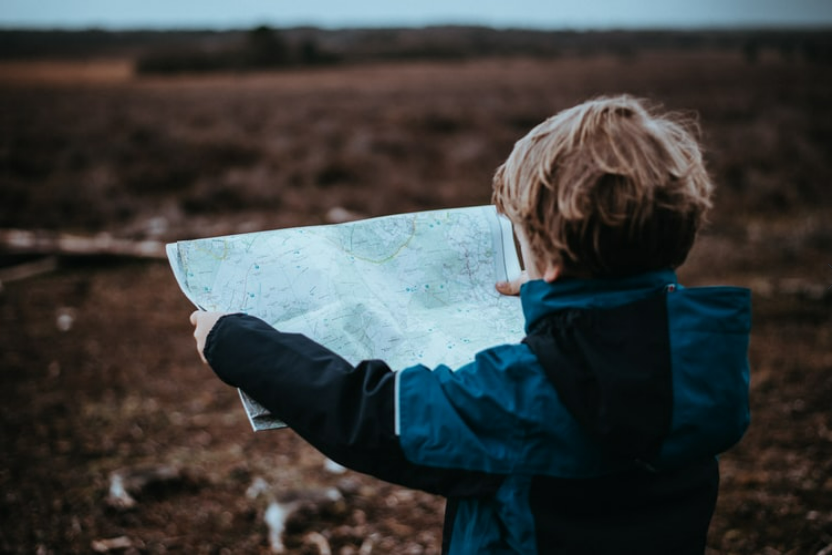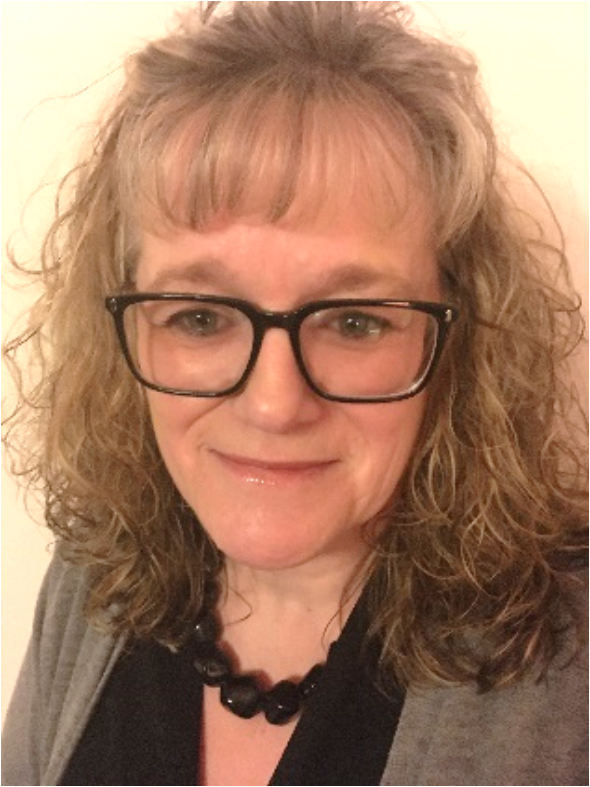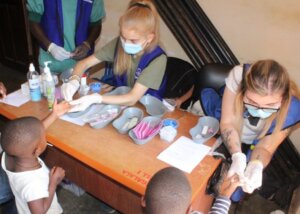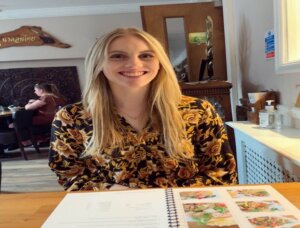As a writer, when someone gives you blank canvas, with no word count, it’s a bit like being a child in a sweetshop. So much choice; where to start, what to include (or not as the case may be), formal or informal….
In the end, I decided on a bit of a mix of everything, I hope it is useful.
Let us start yesterday, and the summer of 2021. On the hottest day of the year so far, my companion and I stopped for a rest in the middle of our local town. We sat happily under the shade of a tree, and both smiled as a very wobbly toddler waddled past us, clearly loving the latest developments in his early childhood journey.
Almost imperceptibly leaning backwards on the slight incline, he held his arms outstretched to help with his balance. Dressed for the weather, in just an all-in-one sleeveless vest, nappy and hat, he was clearly delighted at his obviously new-found skill of being upright. He shrieked with delight at simply being able to play in the sunshine, and move himself, however unsteadily. He had to stop to look all the way up at his very tall Daddy (clearly walking and looking up at the same time are simply too much just yet). Gaining speed prompted a fall, but within seconds he was back up, shrieking again, as Daddy offered words of encouragement, and stood close by in case he was needed.
We watch him as he approached a small step into a quad area that has seats and flowers. He looked down at the step. The step is no more than 5 or 6 centimetres high, but the child knew more thought was needed. Then, the little boy stopped, put both his arms out, stiffened them and clenched his fists. He looked up at Daddy. He looked back at the step. I turned to my companion and said, ‘I wonder what he’ll do, he is clearly a new walker, and perhaps steps will be new too.’ We watched with bated breath. The child shuffled a little. Pouted, and puffed out a big breath. Looked up at Daddy again. Daddy murmured a few words of encouragement. The child shuffled a little more and pouted and puffed again, arms still rigid.
Out of the corner of my eye I noticed the look on my companions’ face. My companion was mesmerised.
Turning back to the toddler, we both smiled as he relaxed his arms and fists, dropped to his knees, and crawled up the ‘step’. Clearly demonstrating knowledge of his own capabilities and deciding that the best way to overcome steps when you are a little wobbly, is to crawl:
Children are active participants in their own development. Reflecting the intrinsic human drive to explore and master one’s environment.
(Shonkoff and Phillips 2000, p.27)
It was over in less than 5 minutes, but it was just lovely to watch. I then turned to my companion who was clearly in awe, and who, does not work with, or have much contact with small children.
What followed was a very detailed conversation exploring what we had just witnessed, and included the following questions:
· How old do you think he is?
· Why did he stop at the step?
· What happened with his arms going rigid, and the fists clenched?
· Why the pouting and the puffing?
· Do they all do that when they are toddlers?
· How long before he’ll be able to do the step?
We also discussed:
· Brain development (neuroscience) and hormones
· Physical development
· Social development
· Emotional development
· Characterises of effective learning
· Maths, communication, language, understanding the world
· (and… how there were no toys/resources…)
My companion and I also spoke about the importance of the role of the adult, attachment, and relationships, serve and return, trauma, and toxic stress. In addition, we discussed how all of this is linked to, and impacts on, child development. (See Bowlby 1951, Ainsworth & Bell 1970, Shonkoff & Philips 2000, and The Center on the Developing Child at Harvard, for example.)
Throughout our discussion I was intrigued by the awe and wonder on the face of my companion. I witnessed first-hand, how someone experiences for the first time, the growing realisation, and miracle that is child development. I heard too, the love, passion, and excitement in my own voice, as I talked with relish about all the things I find fascinating about early childhood. … it was a magical moment in time.
Afterwards, as I reflected on the experience, I was starkly reminded of all the things I sometimes take for granted. It made me think of the knowledge, understanding, skills and experiences I have built up over 30+ years of working in this sector. Working in, with, and across, the maintained and PVI sectors, Local Authorities, charities, and businesses – of all shapes and sizes. I considered the diverse and varied roles I have undertaken from nanny to lecturer, consultant, and author. A career rooted in the central beliefs of partnerships, and championing and supporting children and families, staff and teams, leaders and managers, in both the delights and horrors we see every day.
I reflected on my academic journey too. Starting as a teenager completing the NNEB, each new step building on the previous one, even when sometimes the path felt a little winding. Studying as an undergraduate, gaining various qualifications, a slow building of confidence, self-belief and understanding as I further explored the academic world. How the journey continues even now, as I study for my MA in Education (Early Childhood). I thought fondly too of the people who had helped me along the way, and sadly, of the ones who are no longer with us.
It is interesting that all of this links into my all-time favourite quote from one of the great early childhood theorist heroes, Urie Bronfenbrenner:
Learning and development are facilitated by the participation of the developing person in progressively more complex patterns of reciprocal activity with someone with whom that person has developed a strong and enduring emotional attachment and when the balance of power gradually shifts in favor of the developing person. (Bronfenbrenner 1979, p60)
OK, maybe not quite like that, this is perhaps the more familiar version, and definitely my all-time favourite quote:
In order to develop normally, a child requires progressively more complex joint activity with one or more adults… Every child needs at least one adult who is irrationally crazy about him or her. (Urie Bronfenbrenner 1917-2005)
This leads on to other quotes that have been useful along the way. Such as this one from Maria Montessori, who also had a very clear vision for how adults should behave: ‘The teacher’s [practitioners] task is first to nourish and assist, to watch, encourage, guide, induce, rather than to interfere, prescribe, or restrict.’ (Montessori 1912, pxxi).
This of course then aligns with Montessori’s often quoted ‘help me to do it myself.’ (1936 p.208) and Vygotsky’s idea of the ‘zone of proximal development’:
The distance between the actual developmental level as determined by independent problem solving and the level of potential development as determined through problem-solving under adult guidance, or in collaboration with more capable peers. (Vygotsky, 1978, p.86).
As we explore further, we should of course, also consider the adult role in terms of ‘scaffolding’ (Wood, Bruner and Ross, 1976), as well as, sustained, shared thinking (SST), which Kathy Brodie (2009) defines as:
The important aspect is the ‘meeting of minds’ and subsequent learning that occurs on both sides. The practitioner has the opportunity to learn extensive amounts about how the child sees the world, their level of cognitive development, schemas, community and self esteem (to name but a few!)..
Whilst I am always more than happy to be the ‘irrationally crazy adult’, scaffold, and engage in SST, I am also acutely aware of the significance of the relationships I build and how this can help to buffer the effects of stressful situations:
The toddler who has learned that the people she depends on for comfort will help her when she is distressed is more likely to approach others with empathy and trust than the toddler whose worries and fears have been dismissed or belittled.
(Shonkoff and Phillips 2000, p.90)
Likewise, Dr Jools Page considers this in terms of our professional roles/key person approach etc., and offers:
‘Professional Love’ provides practitioners with the language to appropriately describe the close, loving, intimate and affectionate bond which, over time, is inevitably developed with the children in their care in the context of reciprocity (meaning with mutual agreement) and shared understanding.
(Page 2015, p.15
Further reflection brings up terms that it would be remiss to not mention. These include the importance of listening, (and hearing), of observations, routines, and transitions, of intrinsic motivation, and of course of mental health and wellbeing, for example. Then there are the areas of hormones, emotions, the importance of touch (and the work of Prof. Francis McGlone), and how all of this influences, first ‘co’, and then later ‘self’, regulation:
Stated simply, early development [of self-regulation] entails the gradual transition from extreme dependency on others to manage the world for us, to acquiring the competencies needed to manage the world for oneself
(Shonkoff and Phillips 2000, p.121)
And of course, we could expand further, and explore the work of other theorists, philosophers, and philanthropists. We could talk at great lengths about Plato, Isaacs, Laevers, Owen, Pestalozzi, McMillan, Pascal and Betram, and oh so many other names that have become familiar friends and companions along my journey. And… we could of course consider how much of the discussions we have had, are as equally important to adults, as they are to children.
We could also investigate how sometimes it all seems a little fragile. How such seemingly simple words as ‘play’ and ‘learning’ and ‘development’ can cause such complicated conflicts, and are actually infinitely complex, intricate and nuanced. How our knowledge, experience, skills and understanding, can be questioned and doubted, confused, misinterpreted or misapplied. How sometimes as a sector, and as individuals, it seems we have to fight to be heard. How every day can feel like a hundred small battles to listen to our hearts and put the needs of children and families first – termed ‘quiet activism’ by Dr Nathan Archer (2020/2021). How our beliefs and values, ethics and principles can be tested to the limit, and how it is no wonder that at times imposter syndrome sets in.
For now though, back to the reason for this blog, and my companions wide-eyed awe, wonder and amazement at a small child’s learning and development. To most people, the child was ‘just playing’, enjoying running around and shrieking in the sunshine. To me, it was a magical moment. I saw history in the making. As well as everything else already mentioned, I also saw the history-making moments of an early childhood journey: the progress of a child’s early stages of walking, the developing relationship with Daddy, and the child’s evolving understanding of risk and challenge, for example. As my companion and I talked, I relished the opportunity to share some of my journey and talk about things that are very dear to my heart.
I wonder what you saw when you read the first few paragraphs. Would you ask, or answer the same questions? Talk about the same areas? Would you think of the same theorists, or add others? Would you reflect on the discussion, or maybe research to develop understanding, knowledge, skills and practice? Would we agree, or have a good debate? Or would it take a moment of reflection to not take it all for granted, and acknowledge the journey? To me, it is the journey that is important. I did not always know what I know now, I know that I still have much to learn, and I welcome with open arms the opportunity to continue to learn.
Likewise, I am also thankful for the opportunity to write this blog. It has given me the opportunity to reflect on my journey, where I have come from, and where I am going. It has been a joy to immerse myself in the journey, and the wisdom of those who came before. I often say, that in the early childhood sector, we stand on the shoulders of giants. Those great, historical, contemporary and peer theorists and researchers, the philosophers and philanthropists, those whose dedication continues to develop and guide our research, theory, and practice.
I think the message here is – wherever you are in your early childhood journey, it is worth remembering that we might understand more, but children haven’t changed all that much. What children need hasn’t changed all that much. Children need to play, and need adults that are interested, it isn’t much to ask really is it?
As Froebel famously said, ‘Play is the highest form of child development’ (Froebel 1887, p.54), but he also went on to say:
Play at this time [early childhood] is not trivial, it is highly serious and of deep significance. (Froebel 1887, p.55)
I am sure no one reading this would disagree. And so, our journey continues ever onwards. At the very heart the importance of play, the significance of emotions, attachments and relationships, and overarching, the impact we, as adults, have on children:
If we are in the ECCE sector to make a difference, to improve children’s life chances, and impact on outcomes, all the research shows that it is the staff that make the most difference.
It all comes back to:
• relationships, personal development, training, staff support, such as supervision, and the right environment = quality outcomes for children and families.
Which is exactly what we have examined throughout this book:
• relationships, personal development, training, staff support, such as supervision and the right environment = quality outcomes for practitioners and staff.
And so the message is simple; you can’t have one without the other!
(Garvey 2017, p.242 emphasis in original)
Had you asked, that ‘irrationally crazy’ teenage student, she would simply tell you that she ‘loves children and wants to make a difference’. There would be no quoting Bronfenbrenner. The teenage me would never have believed the opportunities and possibilities this journey has brought. It is 35 years this year since I qualified as an NNEB, the academic exploration, the winding career path and the published books would have all seemed so out of reach that first summer. It was all about the children – it still is.
In conclusion, we come full circle, and back to children, and my little toddling friend. I am delighted to have him accompany me on this journey, furthermore, I think there is a great deal he can teach us. We could all do to remember that it helps to learn to walk before we can run, it helps to have someone to look to for guidance, and some steps are just better left for another day.
Most people sat near us yesterday, will not remember a little boy wobbling and waddling in the sunshine in perhaps even a week’s time, but I know he will stay with me for a long time. And so, I welcome the history, and I am eager, excited and ready to see where this journey will take me next. I embrace the early childhood journey, and I hope you will too: personally, professionally and as a sector.
****************************************************************************
One of the things I am told people love about my books is the reflective practice exercises, so here is one that you might want to consider:
Reflective Practice
The Early Childhood Journey?
Think about your journey to date and consider the following.
How can we individually and as a sector:
· Build on previous knowledge, understanding, skills and experiences?
· Acknowledge, embrace and celebrate the importance of our roles?
· Share the knowledge, understanding and skills created from our historical, contemporary and personal observations, research and experiences?
· Acknowledge, understand and celebrate the journey?
And, for all these questions, consider:
o Why do you think that?
o What could help?
o Where? When?
· Who could help?
o How? Where? When?
Anything else you want to add?

References & Further Reading
Ainsworth, M.D.S. and Bell, S.M. (1970) ‘Attachment, exploration, and separation: illustrated by the behaviour of one-year-olds in a strange situation.’ Journal of Child Development 41, 49–67.
Archer, N. (2020). Borderland Narratives: Agency and Activism of Early Childhood Educators (Doctoral dissertation, University of Sheffield).
Archer, N. (2021) Action for Change (22 February 2021). Early Years Educator Available here: https://www.earlyyearseducator.co.uk/features/article/research-action-for-change
Bowlby, J. (1951) ‘Maternal Care and Mental Health. ’World Health Organization Monograph. (Serial No. 2.)
Brodie, K. (2009) Your Guide to Sustained Shared Thinking. Available at: https://www.kathybrodie.com/articles/guide-sst/
Brodie, K. (2013) Observation, Assessment and Planning in the Early Years: Bringing It All Together. Maidenhead: Open University Press.
Brodie, K. (2014) Sustained Shared Thinking in the Early Years: Linking Theory to Practice. Abingdon: Routledge.
Bronfenbrenner, U. (1979). The Ecology of Human Development: Experiments by Nature and Design. Harvard university press.
Froebel, F. (1826) The Education of Man (WN Hailman Translation), New York: Appleton & Co. Ltd. (Original work published in 1906)
Center on the Developing Child: Harvard University. Available at: https://developingchild.harvard.edu/
Garvey, D. (2017) Performance Management in Early Years Settings: A Practical Guide for Leaders and Managers. London: Jessica Kingsley Publishers.
Garvey, D. (2018). Nurturing Personal, Social and Emotional Development in Early Childhood: A Practical Guide to Understanding Brain Development and Young Children’s Behaviour. London: Jessica Kingsley Publishers.
Garvey, D. (2021) Little Brains Matter: Exploring Neuroscience in Early Childhood. Abingdon: Routledge. (working title-forthcoming)
Garvey, D. and Lancaster, A. (2010) Leadership for Quality in Early Years and Playwork: Supporting Your Team to Achieve Better Outcomes for Children and Families. London: National Children’s Bureau
Montessori, M. (1912). The Montessori Method: Scientific pedagogy as applied to child education in ‘the children’s houses’ with additions and revisions by the author (AE George, Trans.). Cambridge, MA: Robert Bentley.
Montessori, M. (1936). The Secret of Childhood. (Translated and edited by B. Barclay Carter) Calcutta: Orient Longmans.
Page, J. (2015) Professional Love in Early Years Settings (PLEYS) Summary of Findings. https://pleysproject. files.wordpress.com/2017/06/pleys-report_singlepages.pdf; see also http://professionallove. group.shef.ac.uk/pleys/summary-of-findings
Shonkoff, J.P. and Phillips, D.A. (eds) (2000) From Neurons to Neighborhoods: The Science of Early Childhood Development. Washington, DC: National Academy Press.
Vygotsky, L. S. (1978). Mind n Society: The Development of Higher Psychological Processes. Cambridge, MA: Harvard University Press.
Wood, D., Bruner, J., & Ross, G. (1976). The role of tutoring in problem solving. Journal of Child Psychology and Child Psychiatry, 17, 89−100.

Debbie is an active author, trainer, lecturer and speaker on the subject of early years, early childhood and leadership. Debbie has particular interests in neuroscience, PSED, leadership, coaching/mentoring and reflective practice, and the roles these play in developing quality experiences for children, families and staff.
In January 2007, Debbie set up Stonegate Training. Our aim is to advocate quality experiences and provision for children, young people and families, alongside quality CPD experiences for the dedicated practitioners who work with them. Amongst other things, Debbie is accredited as a C4EO Early Years Sector Specialist and a level 6 qualified mentor.
Debbie is currently studying for an MA in Education (Early Years).
Debbie has written several books, and is currently developing manuscripts for two upcoming books, one around neuroscience in early childhood and one around vulnerability. Debbie is an avid Twitter fan – connect with Debbie@stoneg8training.



